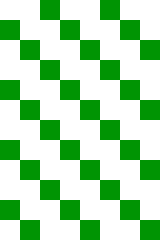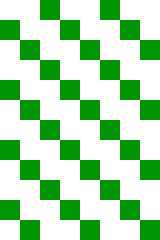Plasma
Plasma is a damaging gas that can seep through walls and other occluding objects, often destroying them in the process.
Mechanically, it is very similar to ![]() corrosive gas, except that:
corrosive gas, except that:
- Plasma does twice as much damage to creatures and robots.[1]
- Plasma can leave creatures it comes in contact with coated in plasma, which causes an additional debuff.[2]
Sources
Common sources of plasma, with their level and density, include:[3]
| Source | Gas Level | Gas Density | Reference |
|---|---|---|---|
| Plasma Gas Generation ( |
Mutation Level | 800 per turn, divided evenly into adjacent squares | [4] |
| 10 | 40 | [5][6] | |
| 10 | 80 | [5][6] | |
| 10 | 120 | [5][6] | |
| 1 | 1000 | [7][6] | |
| 1 | 20 in cell hit, 10 in all adjacent cells | [8][6] | |
| 1 | 80 in cell hit, 40 in all adjacent cells | [8][6] |
Damage
The damage done by plasma depends on the target:[9]
- Plasma deals damage to creatures and robots.
- Plasma deals significantly increased damage to:
- Walls, doors, furniture, chests, statues, and similar objects.
 brooding puffs.
brooding puffs.
- Plasma deals no damage to anything with the
Itemtag. This includes all weapons, armor, equipment, scrap, cybernetics, energy cells, garbage, food, trade goods, corpses, books, water containers, urns and vases, quest items, and most other similar items a character might carry around in their inventory. Furniture items, such as chests or
chests or  weapon racks are affected, but any items within will drop to the ground undamaged.
weapon racks are affected, but any items within will drop to the ground undamaged.
Note that, even though plasma does not directly damage items, it does apply the coated in plasma effect to them. This can make those items more susceptible to other forms of damage, such as catching on fire.
The following damage formulas are used to calculate plasma damage:[9]
| Formula | Notes | |
|---|---|---|
| Creatures and Robots | ( Density × GasLevel ) / 100
|
(rounded up) |
| Walls and Similar Objects | ( 0.75 × GasLevel + 0.25 ) × Density
|
(rounded up) |
In practice, gas damage is highly variable due to a significant amount of randomization involved in gas behavior.
Gas is constantly moving between cells, dissipating over time, merging with other gas, and being affected by random calculations in the game engine. Its density, which is the main predictor of damage, is always changing.
The density of plasma can get much higher than 100 with the Plasma Gas Generation mutation, which is the signature mutation of a ![]() plasma jelly. With that mutation, a creature releases 100 density units of gas into the cells around them each turn, and can continuously release gas for many turns depending on mutation level. This can result in very high density gas if the gas is released into a small area.
plasma jelly. With that mutation, a creature releases 100 density units of gas into the cells around them each turn, and can continuously release gas for many turns depending on mutation level. This can result in very high density gas if the gas is released into a small area.
The following table indicates how much damage plasma of a certain level will do per round, depending on gas level and density. The table includes only Gas Levels 1 and 10, since other gas levels are not commonly found in game.
| Gas Level | Density | Gas damage per round | |
|---|---|---|---|
| creatures / robots | walls / objects | ||
| 1 | |||
| 10 | 1 | 10 | |
| 20 | 1 | 20 | |
| 40 | 1 | 40 | |
| 60 | 1 | 60 | |
| 80 | 1 | 80 | |
| 100 | 1 | 100 | |
| 120 | 2 | 120 | |
| 180 | 2 | 180 | |
| 240 | 3 | 240 | |
| 300 | 3 | 300 | |
| 1000 | 10 | 1000 | |
| Gas Level | Density | Gas damage per round | |
|---|---|---|---|
| creatures / robots | walls / objects | ||
| 10 | 40 | 4 | 310 |
| 80 | 8 | 620 | |
| 120 | 12 | 930 | |
| 200 | 20 | 1550 | |
| 300 | 30 | 2325 | |
| 400 | 40 | 3100 | |
| 500 | 50 | 3875 | |
| 600 | 60 | 4650 | |
| 700 | 70 | 5425 | |
| 800 | 80 | 6200 | |
| 900 | 90 | 6975 | |
| 1000 | 100 | 7750 | |
| 1200 | 120 | 9300 | |
| 1400 | 140 | 10850 | |
| 1600 | 160 | 12400 | |
Looking for a more extensive damage breakdown? You can refer to the corrosive gas damage table - the numbers are the same except that you'll need to multiply the "creatures/robots" damage shown on the corrosive gas page times 2 to get the plasma damage for the same level and density.
References
| This information is reliable as of patch 2.0.202.94. |
- ↑
XRL.World.Parts.GasPlasma - ↑
XRL.World.Effects.CoatedInPlasma - ↑
XRL.World.Parts.Gas - ↑
XRL.World.Parts.Mutation.PlasmaGasGeneration - ↑ 5.0 5.1 5.2
XRL.World.Parts.GasGrenade - ↑ 6.0 6.1 6.2 6.3 6.4 6.5
ObjectBlueprints.xml - ↑
XRL.World.Parts.Corpse - ↑ 8.0 8.1
XRL.World.Parts.EmitGasOnHit - ↑ 9.0 9.1
XRL.World.Parts.GasDamaging

